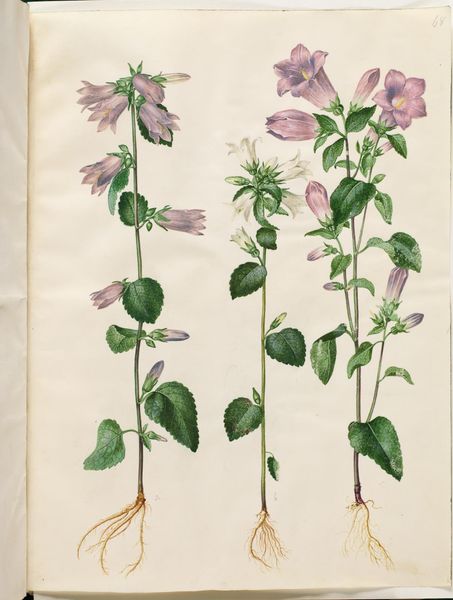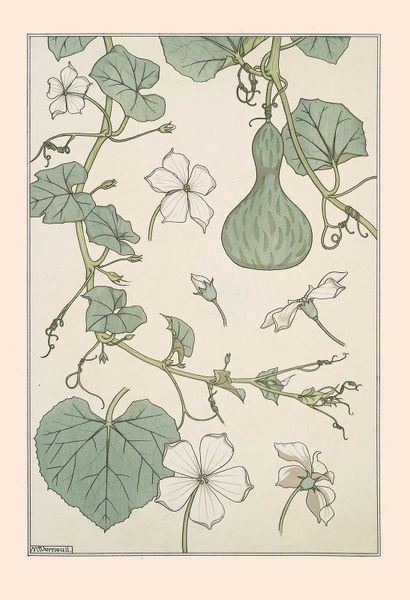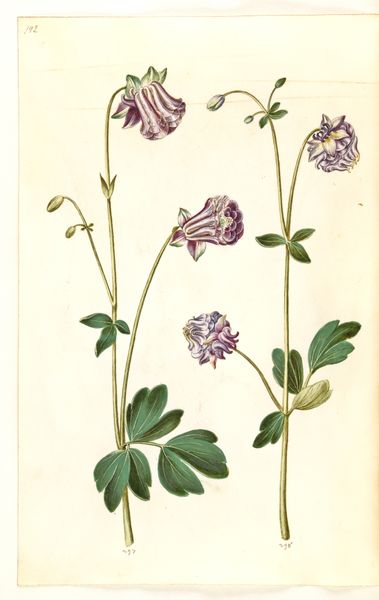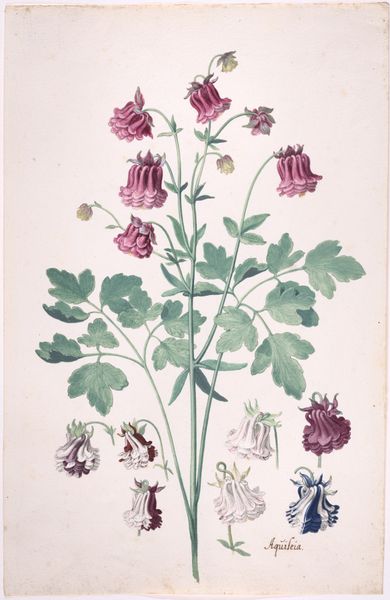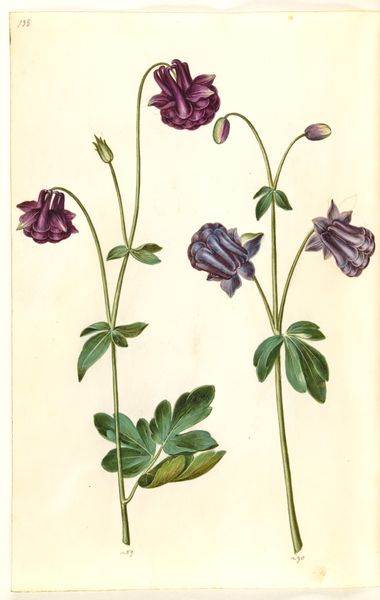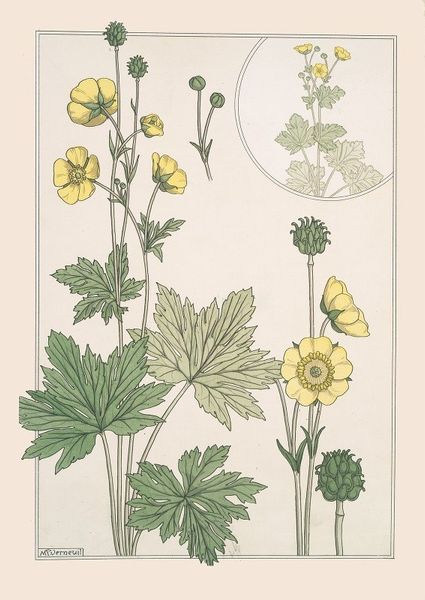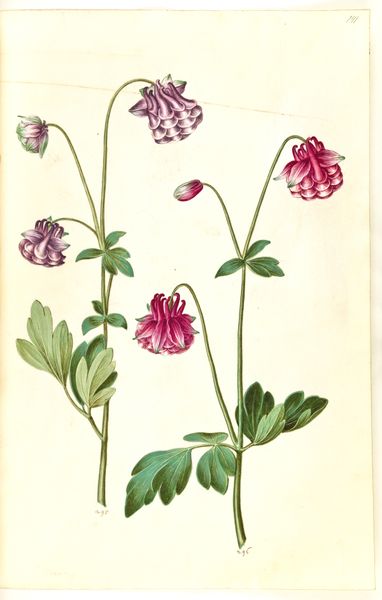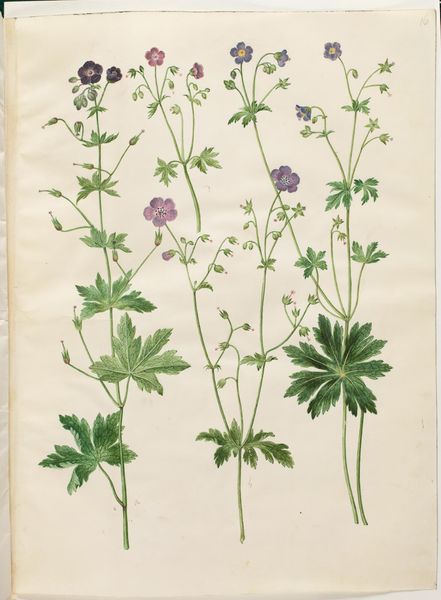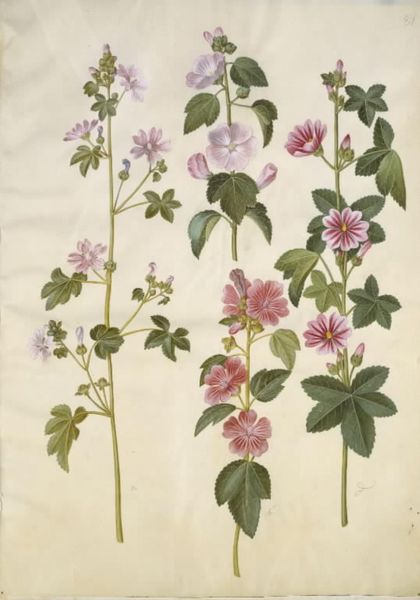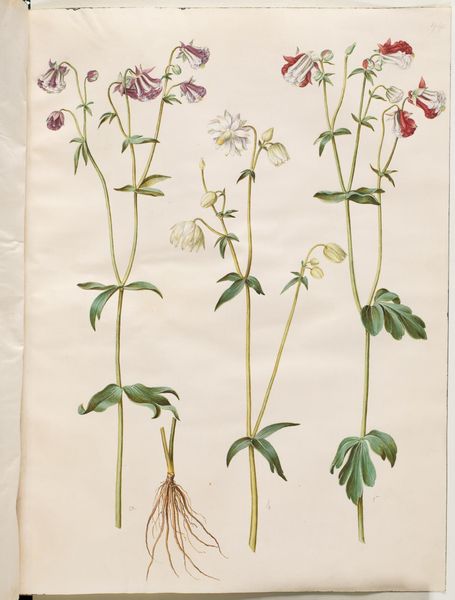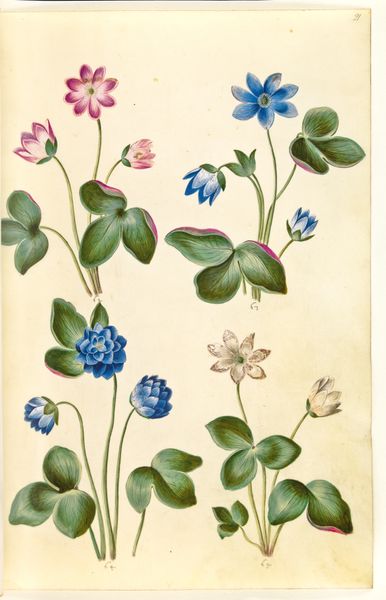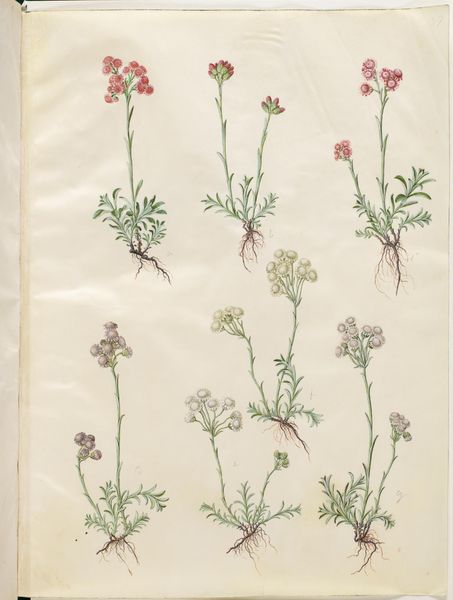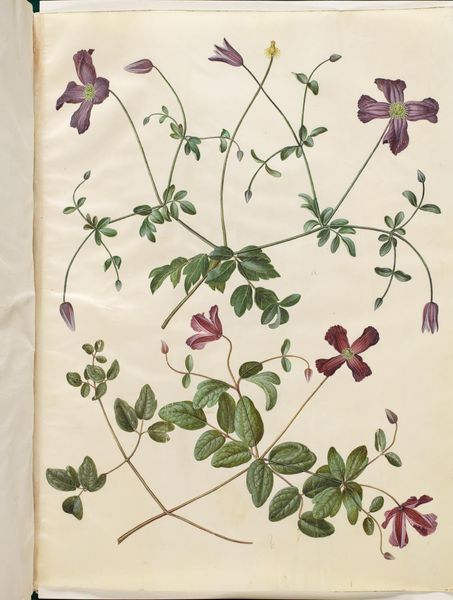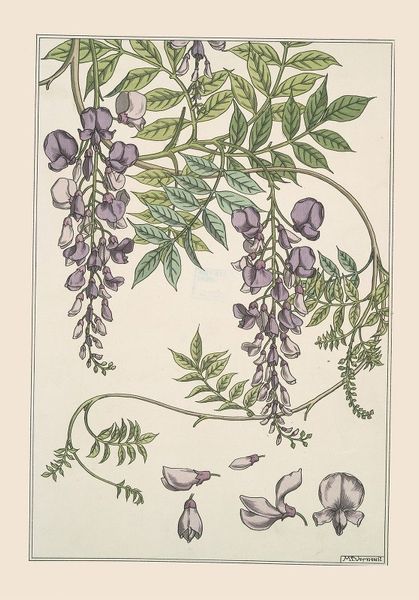
drawing, print
#
drawing
#
art-nouveau
# print
#
linocut print
#
flower pattern
#
textile design
#
decorative-art
Copyright: Public Domain: Artvee
Editor: Here we have Maurice Pillard Verneuil's "Ancolie," created around 1896. It appears to be a print, perhaps a linocut, depicting various stages of columbine flowers. It feels like a design, maybe for wallpaper. What stands out to you about this work? Curator: Well, let's consider this linocut print in relation to the Art Nouveau movement. Verneuil, a key figure, wasn’t simply creating “art.” He was designing for mass production, for a burgeoning consumer culture. Look at the precise rendering, almost industrial in its clarity. How do the materials—the paper, the inks, the linoleum block itself—speak to the era's embrace of new technologies? Editor: I see what you mean. It's not just a pretty picture; it's a blueprint for something more. Do you think the choice of the columbine flower is significant? Curator: Absolutely! Verneuil wasn’t just grabbing any bloom. The columbine, with its complex structure and drooping form, offered a challenge and opportunity for stylized representation and highlights the commodification of natural forms within Art Nouveau. But also the labor involved, both the artist's and the printers’, is embedded within the piece itself. Editor: So, it's decorative, but with a critical lens? Curator: Precisely. It’s a product of its time, reflecting both the allure and the potential alienation of industrialization. A dialogue between handcraft and mass production. Editor: That's fascinating. I’ll definitely view Art Nouveau differently from now on. Thanks for pointing out those key elements. Curator: My pleasure! Considering the means of production often reveals more than simply analyzing aesthetic choices.
Comments
No comments
Be the first to comment and join the conversation on the ultimate creative platform.
